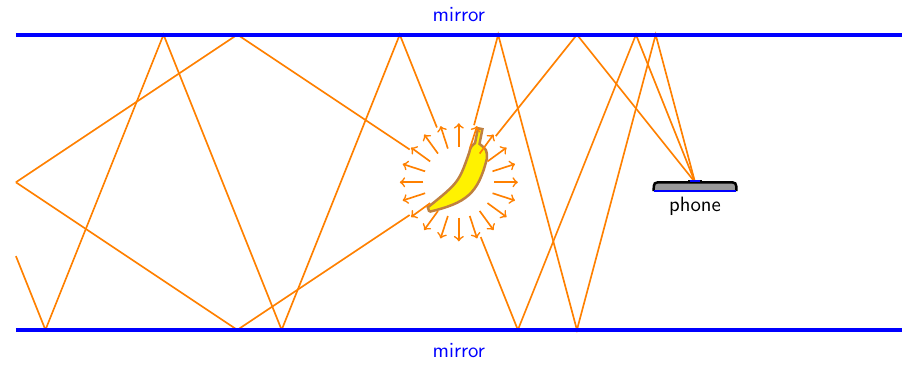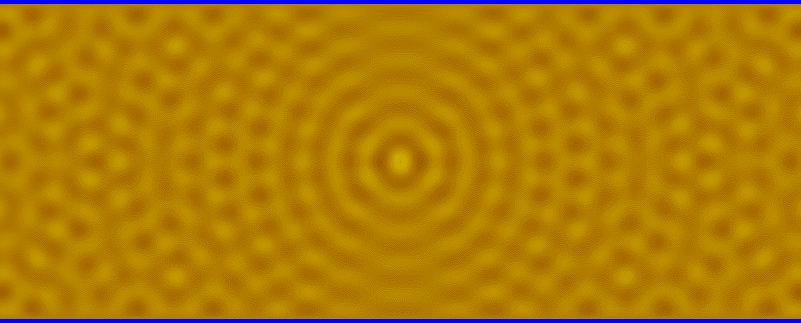Waveguides have been mentioned a few times in this blog (i. e. here and here), so it seems quite apt to explain (in laymans words) what a waveguide is. As any serious pundit, I will start by quoting the internets source of everlasting wisdom:
„A waveguide is a structure that guides waves, such as electromagnetic or sound waves.“
This, of course, does not really help, since the reader can guess this definition just from reading the word „waveguide“. But we learn, at least, that a waveguide is not a person but a structure, unlike – for example – a tour guide. Let’s try again to find out what a waveguide is by picking the word apart:
What’s a wave? Luckily, due to discovery of the wave-particle duality in the last century, the answer is quite clear: Almost everything is a wave. So, that’s done.
We remain to explain what we mean by a „guide“. As aforementioned, it is not a person. It might be a structure in the material sense, that is: Something you can build. But it might also be a structure in a more abstract sense, for example a magnetic field whose strength varies in space. In any case, it is something different from a homogeneous free space. To summarize, we learned that
A waveguide is neither a person nor a homogeneous, infinitely stretching free space.
Clearly, this is not helpful at all.
Nevertheless, we found out that the notion of a waveguide can be bent by a creative scientist to describe a lot of things. This is something one can notice on conferences on the topic, as the one I visited recently on the small Island of Porquerolles near Toulon, France. Similar to the spring school in Mbour, Senegal, Porquerolles is a rather pleasant place to do mathematics: White sand strands, beautiful cliffs and not yet too besmirched by mass tourism, it is worth a visit for itself. But I digress: Trying to fit his research into the conference, one of the speakers declared at the beginning of the his talk:
„Since this is a conference on waveguides, I am going to call this [his research topic] a waveguide.“
Which turned out to be appropriate in some sense, not very surprisingly.
Because my attempt to clarify the word „waveguide“ failed, I went to my bathroom with a banana and my smartphone. Well, strictly speaking, not to my bathroom, but to my favorite hardware store, since I do not own a bathroom cabinet with such neat mirrors on the inside.
On the photo I took you can see my phone and a bunch of bananas (but in truth, there is only one!). What is happening here? To explain, I have drawn a picture showing the situation in the photo when viewed from the top:

The light rays going out from the banana are reflected by two mirrors in both directions via various paths, bouncing multiple times back and forth between the mirrors. That’s why the camera can see multiple images of the same banana. But that’s not the only interesting thing in the picture: As you might have noticed, I extended the mirrors in my sketch quite a bit to the left and right. The light emitted from the banana is reflected again and again as it propagates to the left, and since light is an electromagnetic wave, we could say that the lightwave is guided by the mirrors! Since the ray model does not properly catch many of the wavy aspects of light, I made a little animation showing a wave in a similar situation:

In the animation you can see a small, banana-colored lightbulb emitting waves, which are reflected by the mirrors at the top and bottom of the picture. At the left and right boundary of the animation, there are no mirrors, and the waves can escape there (the mirrors are assumed to extend infinitely to the left and right). Due to the manifold reflections at the mirrors, the waves form interesting interference patterns.
So, that’s a waveguide.
And yes, physicists and engineers can use waveguide effects for practical purposes.